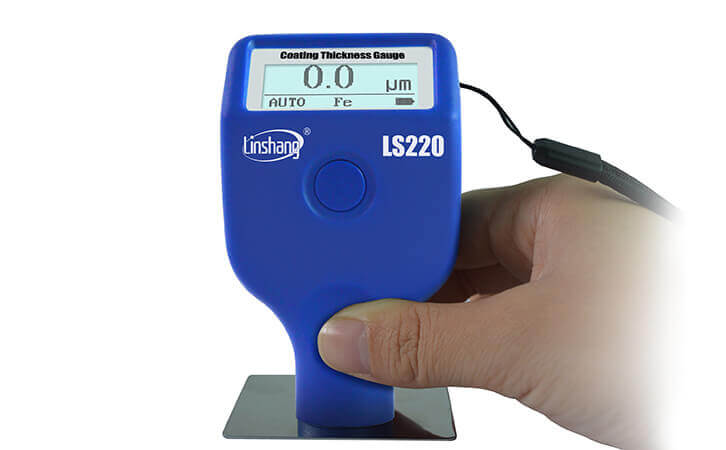How to Use the Coating Thickness Meter Properly?
Different people use the same coating thickness meter to measure the same coating on different types and different state substrates. The data may be different. Therefore, when using the Linshang LS220 coating thickness meter. The following points need to be considered when using the coating thickness meter:

1. Measurement environment
When using, try to stay away from strong magnets, sounds and strong electromagnetic field transformers, induction cookers, etc.
2. The measured substrate
When usingcoating thickness meter LS220 to measure magnetic or non-magnetic substrate, zero adjustment should be performed according to the corresponding Fe or NFe standard, the measurement results are more accurate.
3. Measuring the material surface
The shape, thickness, and surface roughness of the test sample are different and the actual measured results will be different. When measuring, choose to measure at the plane as much as possible. Make sure that the surface of the measuring material is clean and that the instrument probe is in direct contact with the test sample surface.
4. Operation
Place the probe on the test piece to maintain a constant pressure. In the measurement, the probe is perpendicular to the surface of the sample. The measured data of Linshang LS220 coating thickness meter are not exactly the same every time, so read a few more in each measurement area. Multiple measurements should be made when the surface is rough.
For more information about the coating thickness meter, please refer to https://www.linshangtech.com/tech/tech563.html
- High precision coating thickness gauge for used car
- Automotive paint protection films coating thickness gauge
- Plating Thickness Measuring Instrument for Detecting Anti-corrosion Coating
- Linshang LS220, LS191, LS160A– Necessary for Car Cover Inspection
- Coating Thickness Gauge for Second Hand Vehicle
- Zero Adjustment Step of Coating Thickness Gauge